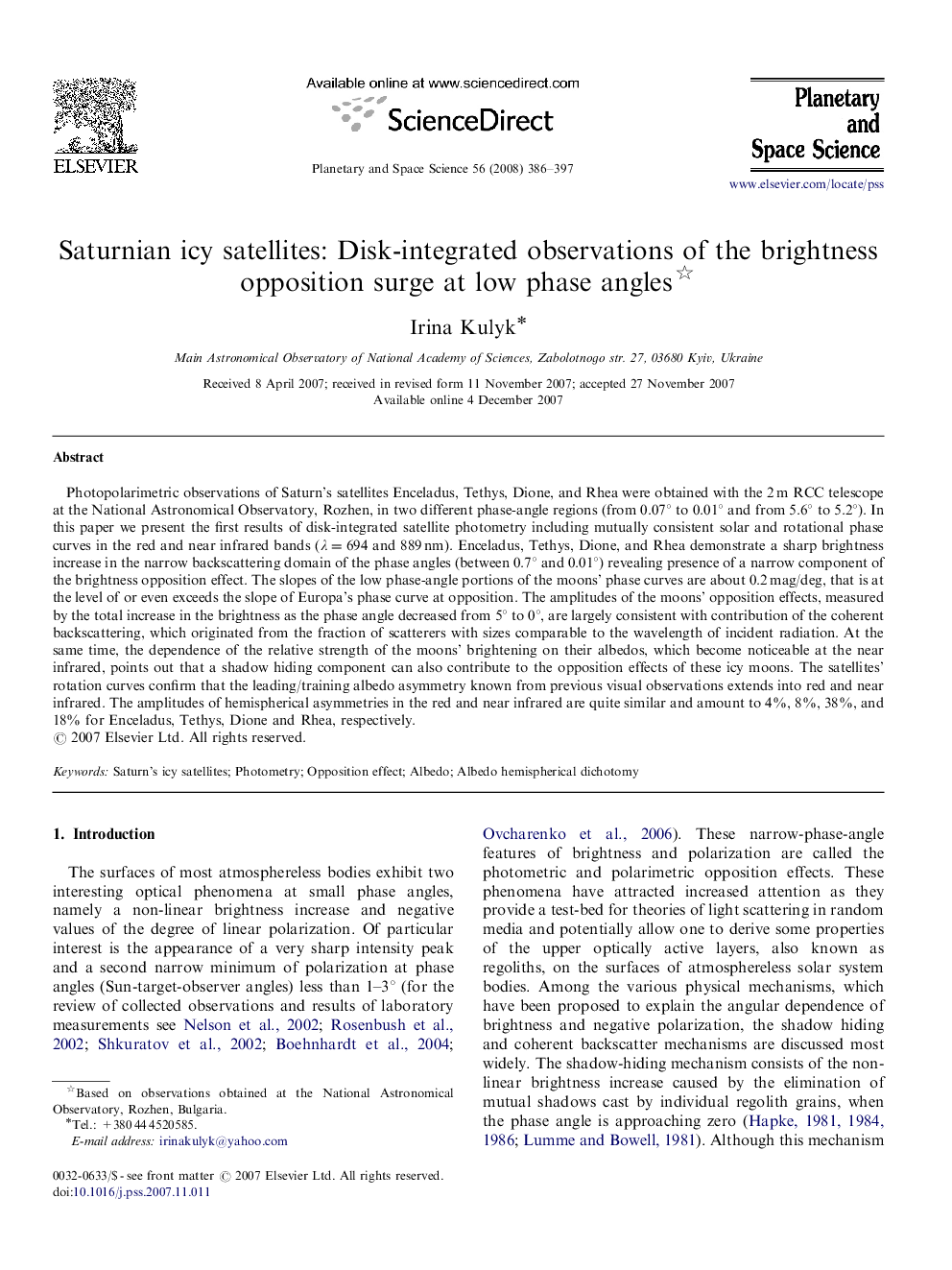| کد مقاله | کد نشریه | سال انتشار | مقاله انگلیسی | نسخه تمام متن |
|---|---|---|---|---|
| 1782340 | 1523972 | 2008 | 12 صفحه PDF | دانلود رایگان |
عنوان انگلیسی مقاله ISI
Saturnian icy satellites: Disk-integrated observations of the brightness opposition surge at low phase angles
دانلود مقاله + سفارش ترجمه
دانلود مقاله ISI انگلیسی
رایگان برای ایرانیان
موضوعات مرتبط
مهندسی و علوم پایه
علوم زمین و سیارات
فیزیک زمین (ژئو فیزیک)
پیش نمایش صفحه اول مقاله

چکیده انگلیسی
Photopolarimetric observations of Saturn's satellites Enceladus, Tethys, Dione, and Rhea were obtained with the 2 m RCC telescope at the National Astronomical Observatory, Rozhen, in two different phase-angle regions (from 0.07° to 0.01° and from 5.6° to 5.2°). In this paper we present the first results of disk-integrated satellite photometry including mutually consistent solar and rotational phase curves in the red and near infrared bands (λ=694 and 889 nm). Enceladus, Tethys, Dione, and Rhea demonstrate a sharp brightness increase in the narrow backscattering domain of the phase angles (between 0.7° and 0.01°) revealing presence of a narrow component of the brightness opposition effect. The slopes of the low phase-angle portions of the moons' phase curves are about 0.2 mag/deg, that is at the level of or even exceeds the slope of Europa's phase curve at opposition. The amplitudes of the moons' opposition effects, measured by the total increase in the brightness as the phase angle decreased from 5° to 0°, are largely consistent with contribution of the coherent backscattering, which originated from the fraction of scatterers with sizes comparable to the wavelength of incident radiation. At the same time, the dependence of the relative strength of the moons' brightening on their albedos, which become noticeable at the near infrared, points out that a shadow hiding component can also contribute to the opposition effects of these icy moons. The satellites' rotation curves confirm that the leading/training albedo asymmetry known from previous visual observations extends into red and near infrared. The amplitudes of hemispherical asymmetries in the red and near infrared are quite similar and amount to 4%, 8%, 38%, and 18% for Enceladus, Tethys, Dione and Rhea, respectively.
ناشر
Database: Elsevier - ScienceDirect (ساینس دایرکت)
Journal: Planetary and Space Science - Volume 56, Issues 3â4, March 2008, Pages 386-397
Journal: Planetary and Space Science - Volume 56, Issues 3â4, March 2008, Pages 386-397
نویسندگان
Irina Kulyk,